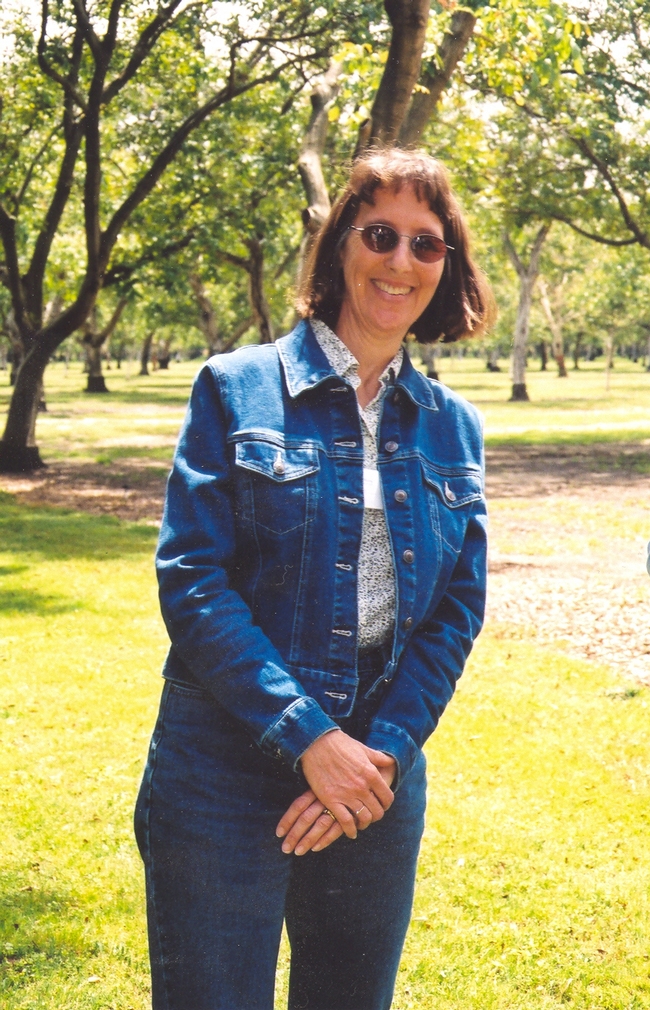UC Blogs
Un-Stump the Master Gardener
I have a question to anyone who might know what the plant is in the two following pictures.
A friend of mine asked me what it could be. She said that someone gave her a bulb and this is the results. Unfortunately, she did not get the name of the plant. If you look closely at the picture you can see where the stem starts in the barrel and grows almost to the patio roof. The second picture is a close up of the blossom.
I have asked several Master Gardeners, but so far it seems to be a plant that resembles a lot of other plants, so no one is sure what it might be. That is my reason for asking for help from anyone that might have a clue for me so that I could identify it for her with your help.

Mystery plant. (photos by Betty Victor)

The flower in question.
Ah, Salvia!
Did the hard freeze damage your plants? Were you surprised by the seemingly random path of destruction? Or, were you a diligent gardener who took the time to cover your cherished plants and was rewarded by healthy specimens ready to carry on to 2014? I admit to being lazy, wimpy, busy, and hopeful, actually, that my plant selections were sufficiently hardy to brave our very cold first week of December.
Determined to allow natural selection to take its course, my only real attempts at plant protection were to move the pots on the south-facing patio as close to the house as possible. One night I brought several pots in to the house and was rewarded by a hibiscus bloom the next morning. Unfortunately, that was its last bloom, I am sure, as I foolishly moved it back outside and it is now a sprawling brown mass of dead foliage. My one bright spot of December flower gardening has been my Salvia spathacea 'Las Pilitas', a low-growing pitcher sage with magenta blossoms. I am seeing these blossoms for the first time this week! First planted in May on a bank with other sages, this poor thing did nothing until it was moved to a pot and began to grow steadily from its four inch height to its present two-foot height. The identification tag it came with from the nursery said it required part shade and low water. Turns out if in fact much happier with regular water and rich potting spoil.
Sunset Western Garden Book claims this Salvia is hardy to 20 degrees, and I am happy to report it must be correct. Thank you, odd 2013 weather weather for bringing us this Christmas Blossom.

S. spathacea 'Las Pilitas'. (photo courtesy of Laspilitas.com)
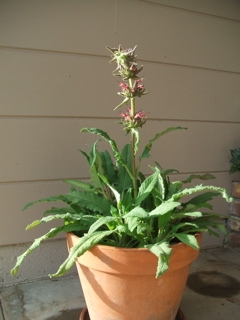
Salvia spathacea 'Las Pilitas'. (photo by Diana Bryggman
See Full Videos, Powerpoints and Papers from the 2013 Alfalfa & Forage Symposium in Reno
OK, so your truck got a flat, the cows got out, and you were unable to attend the 2013 alfalfa shin-dig in Reno this year?? If you were not among...
Her Name Was Olive
Her name was Olive. Every Friday morning she'd come bounding over to greet me, her tail wagging happily, one ear up, one ear down. I called her "My...
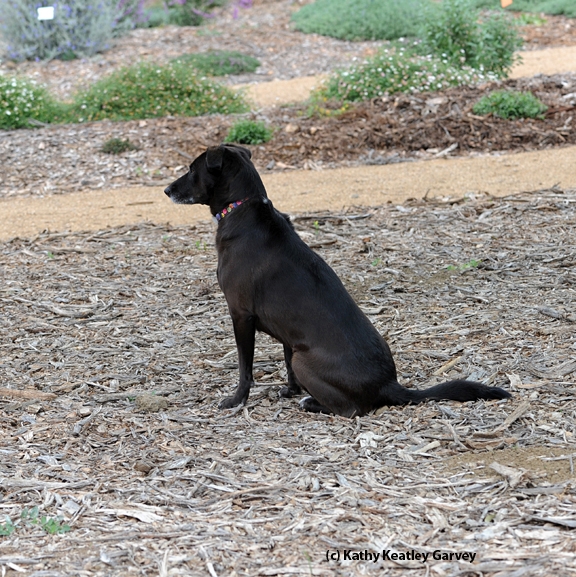
Olive attentively watches for Kris Kolb. (Photo by Kathy Keatley Garvey)
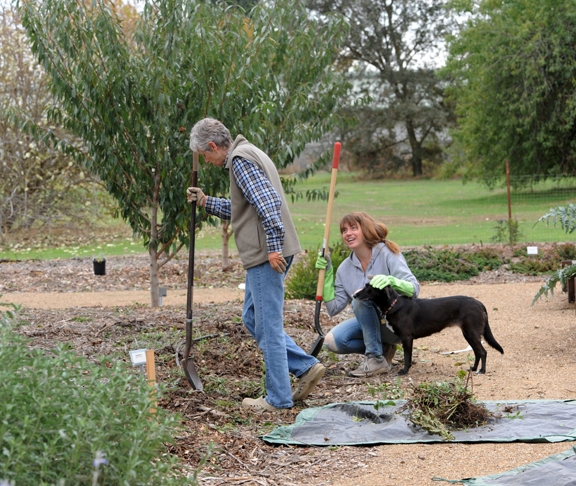
Sarah Hodge pets Olive, while Kris Kolb gardens. (Photo by Kathy Keatley Garvey)
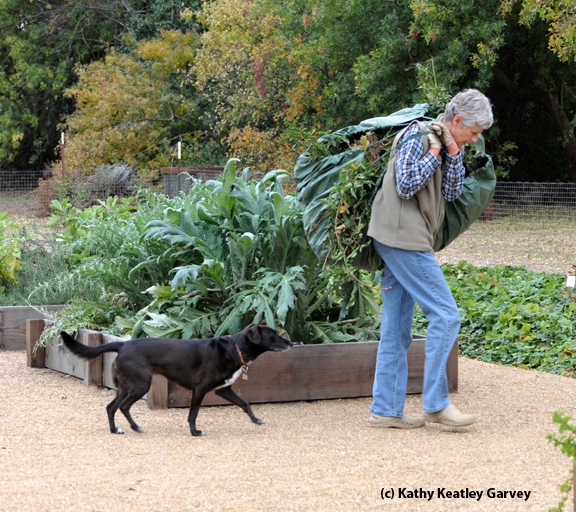
Olive faithfully follows Kris Kolb as she hauls away clippings. (Photo by Kathy Keatley Garvey)
Thirty-year farm advisor gets her day in the sun
Hasey, a plant pathologist by training, conducts research and works with farmers on a wide variety of crops, plant systems and cultural methods in Sutter and Yuba counties. She called the results of the walnut pruning research "a real paradigm shift."
Hasey and Bruce Lampinen, UC Cooperative Extension specialist in the Department of Plant Sciences at UC Davis, learned that trees that have been trimmed sparingly or not at all produced a bigger yield than trees that were pruned more aggressively.
"We've had several growers adopt it," Hasey said. "We always caution growers that whenever we have something new, to do it on smaller acreages first to see how it works. But there are several growers who are adopting it now because it's working so well. We do have fairly long-term data."


